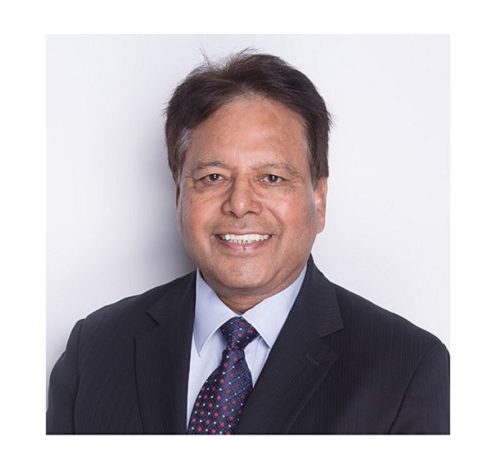Vast opportunities in robotic surgery

Improvements in technology, previously observed limitations and the cost to the patient have all been factors serving as catalysts for the growth of the global robotic surgical marketplace. Dr Sudhir Prem Srivastava,
Chairman, Founder and MD, SS Innovations gives an insight
Since its introduction to India in 2002, robotic surgery has experienced limited growth for India’s size and population. Until date there are less than 100 robotic surgical systems for a country of over 1.3 billion people having approximately 70,000 hospitals.
The majority of robotic assisted procedures being performed are within the field of Abdomino-Pelvic surgery which includes urology, gynaecology and general surgery. As you may already know, India has the largest number of laparoscopic surgeons in the world who are highly proficient in their respective fields. The introduction of robotic surgery to India gave them a wonderful opportunity to further expand their medical practice to be able to do more complex surgical procedures beyond the laparoscopic approaches. The reason one can do even more complex procedures robotically, that would otherwise traditionally be done in an open surgical setting, is the presence of two very important distinguishing factors, 3D vision and the utilisation of wristed instruments. Given the fact that robotic surgeries are done in a completely endoscopic manner, it is of critical importance that one have depth perception which can only be achieved through the utilisation of a 3D camera system.
Additionally, giventhe complexity of procedures done with robotic assisted surgery, wristed instruments, which mimic the natural motions of the human wrist, are used to better accomplish the surgical tasks at hand. Although robotic surgery is now commonly offered in many Tier-1 cities in India, its adoption rate has remained relatively low due to limited access to this technology which inevitably comes down to the cost of the system as well as ongoing high costs tied to consumable instrumentation and maintenance contracts.
Growth opportunities
The opportunities for the growth of robotic surgery in India are vast. Presently, India has the largest number of medical colleges in the world. As many doctors undergo post graduate laparoscopic training and come out as trained laparoscopic surgeons, similarly, if robotic assisted technologies were offered during the training of young surgeons, they would also undergo the training necessary to be proficient at robotic assisted surgery. Keeping this in mind, I must point out the following. To become a good robotic surgeon, one must first and foremost be an
excellent surgeon in the conventional open procedures. In the case of the Abdomino-Pelvic specialties mentioned previously, the natural evolution occurs from open surgery to laparoscopic surgery and finally robotic surgery. In my field of cardiac surgery, we never had a laparoscopic option for coronary bypass procedures as well as valve repair/replacement surgeries.
As I was one of the first cardiac surgeons approached for the initial clinical trials during the early 2000s, we had to create our procedural steps utilising, at that time, the newly introduced robotic technology. I feel that there is a great hunger amongst our young surgeons in India to have access to the latest technologies to deliver the best standard of care for our patients. In this day and age, there is no reason to undergo conventional surgeries that are associated with longer recovery times, increased risk for would infection and blood loss and an increased burden to patients, families and society as a whole.
With robotic surgery I have personally witnessed a faster functional recovery thereby improving the quality of life not only for my patients but for their families as well. When patients recover quickly there is a huge benefit to society as a whole, families do not need to take time off to travel to larger cities for these procedures, the patient can return to work faster and the same hospital bed which would ordinarily be occupied longer can be given to another patient as well. With regards to other opportunities for growth, I would also like to discuss the emergence
of other robotic surgical companies concerning the global landscape. The DaVinci surgical system is the most widely used robotic system in the world today. However, today we see that many other robotic surgical companies are beginning to share the global stage. Improvements in technology, previously observed limitations and the cost to the patient have all been factors serving as catalysts for the growth of the global robotic surgical marketplace.
I truly believe that we must always keep advancing the evolution of science to find ways to streamline procedures, increase access and availability of these systems and ultimately lower the cost to make these gold standard procedures available for the masses. Gold standard medical care should be a basic right for all, not just for those who are wealthy. impediments for the growth Having trained over 350 robotic surgical teams globally, as well as having practiced cardiac surgery both in the US and in India, I feel that the largest impediment for the growth of robotic surgery in India is cost. From a training and proficiency point of view the cost of the system is directly related. If one cannot afford the system, then access to this technology does not occur.
Without access one cannot train on the system to further develop the skill set required for the hand-eye coordination required to successfully carry out surgical tasks in an endoscopic manner. India is an extremely price sensitive market and even with hospital programmes who can afford the system, the overall burden of cost falls on the patients. An expensive system, instruments and maintenance contracts all translate into the cost of each procedure which is inevitably borne by the patients. I have seen this in my practice, a patient would be a perfect candidate for robotic assisted heart surgery but due to the cost, would not elect to undergo these types of procedures. Rather, they would undergo the traditional splitting of the sternum and have to experience longer recovery times. Keeping this in mind, I made it my mission to lead the development of a cost-effective system with reduced costs across the board with regards to instrumentation and maintenance. My goal is to make this technology available so that more and more surgeons can begin their training and become good at robotic surgery. India truly has an opportunity to serve as a progressive model for so many other nations around the world and just like them, all we need is the opportunity to access these technological advancements.
Robotic surgery in 2022
The forecast for robotic surgery in 2022 looks ever promising. Multiple companies are emerging that offer robotic assisted surgeries. I hope that as the adoption rate increases amongst the doctors and awareness is brought to the masses of the benefits of robotic surgery, the patients will begin to demand these procedures as they are the ultimate beneficiaries of this chosen method of surgery. In many price sensitive nations, the companies will have to lower their prices to meet the demand. At SS Innovations, we are on the brink of launching our Mantra Surgical Robotic System, first in India then globally in the coming year. Our system will be the most affordable system on the market that utilises the latest technologies.
Additionally, in addition to being able to be used for urology, general surgery, thoracic surgery, head and neck surgery and gynaecology, our system will be the only system on the market that will be able to be utilised to perform robotic cardiac surgery and more specifically robotic bypass surgery. I hope that not only countries like India will benefit but many nations globally that have been underrepresented in accessing this wonderful technology. After launching our system, we have every intention to remain a science-based company and will continue to pursue other avenues of robotic assisted technologies, i.e., specialty specific robotics, single arm applications for diagnostic and target therapies, pediatric robotic systems and a vast array of enabling technologies across the spectrum of surgical specialties. We are very excited about the future of robotics in India and welcome this future with open arms.




